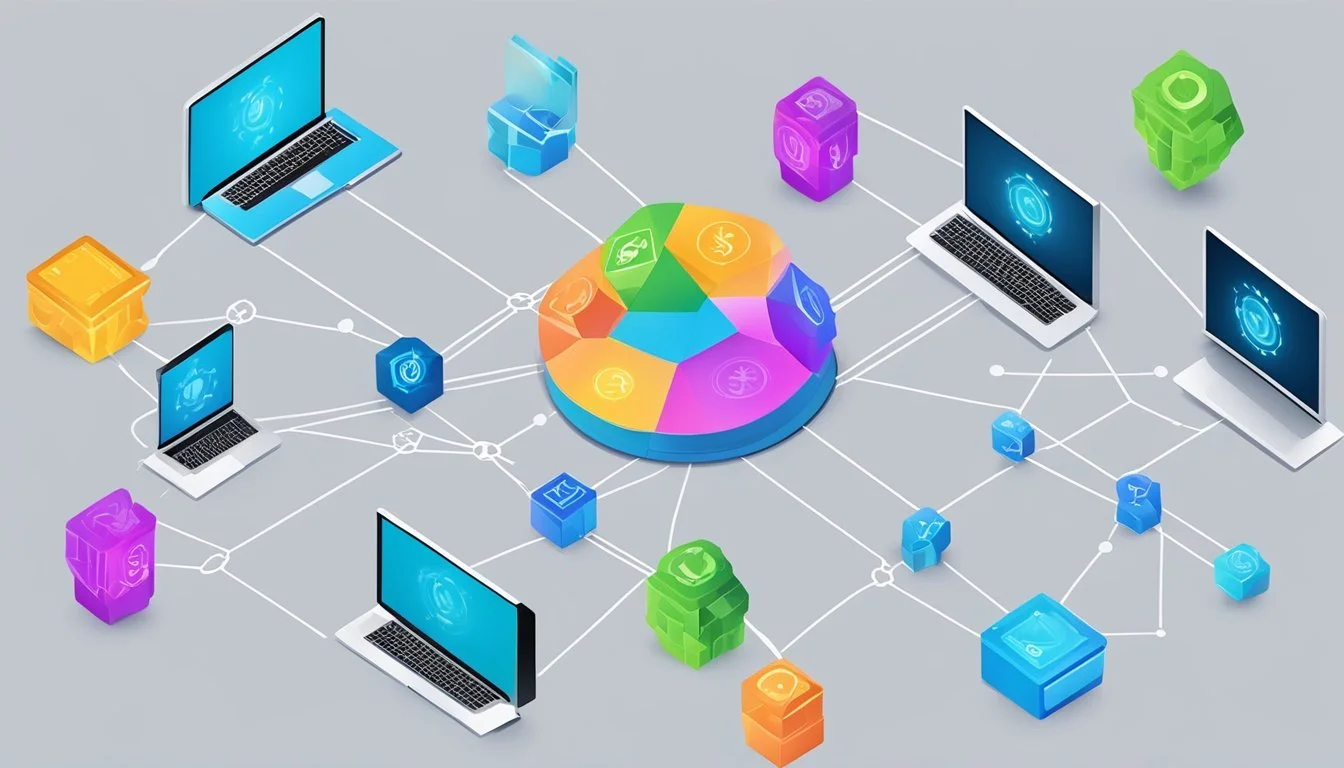Unraveling the Internet: The Real Creation of Facebook
A Deep Dive into Social Media's Origins
The creation of Facebook is a tale of innovation, ambition, and controversy. Mark Zuckerberg, a Harvard student in 2004, launched the platform that would revolutionize social interaction online. Facebook began as a digital version of traditional college face books, aiming to connect students within Harvard's campus.
What started as a localized project quickly expanded beyond the confines of a single university. Zuckerberg's vision for a universal social network captured the imagination of users worldwide. The platform's rapid growth was fueled by its user-friendly interface and the basic human desire to connect and share.
As Facebook evolved, it faced challenges and criticisms. Privacy concerns, data handling practices, and the platform's impact on society became hot-button issues. Despite these controversies, Facebook's influence on digital communication and social media remains undeniable, shaping how billions of people interact in the modern age.
The Genesis of Facebook
Facebook's origins trace back to Harvard University in 2004. Mark Zuckerberg and his classmates created a platform that would revolutionize social networking and online communication.
Inspiration Behind the Idea
The concept for Facebook emerged from existing campus directories at Harvard. These "facebooks" contained student photos and basic information. Zuckerberg saw an opportunity to digitize this system and expand its reach.
He initially created Facemash, a site that allowed students to rate their peers' attractiveness. While controversial, it demonstrated the potential for a digital social network on campus.
The success of Facemash inspired Zuckerberg to develop a more comprehensive platform. He envisioned a digital space where students could connect, share information, and interact online.
Mark Zuckerberg's Vision
Zuckerberg aimed to create a platform that reflected real-world social connections in a digital environment. He wanted to build a network where users could:
Share personal information
Connect with friends and classmates
Communicate through messages and posts
The initial version of Facebook was exclusive to Harvard students. It required a .edu email address to join, ensuring a closed community of verified users.
Zuckerberg's vision extended beyond Harvard. He saw potential for Facebook to connect students across multiple universities and eventually the wider world.
Eduardo Saverin's Business Models
Eduardo Saverin, Zuckerberg's co-founder, focused on developing sustainable business models for Facebook. He explored various revenue streams to support the growing platform.
Saverin initially proposed:
Advertising: Targeted ads based on user data
Partnerships: Collaborations with campus organizations
Premium features: Paid upgrades for enhanced functionality
He recognized the value of user data and its potential for targeted advertising. This insight would later become a cornerstone of Facebook's business strategy.
Saverin's business acumen complemented Zuckerberg's technical skills. Their partnership laid the foundation for Facebook's rapid growth and eventual dominance in social media.
Facebook's Precursors and Influences
Several key elements shaped Facebook's development in its early stages. These influences ranged from direct predecessors to competing social networking concepts that were emerging at the time.
Facemash and its Role
Facemash, Mark Zuckerberg's initial foray into social networking, played a crucial role in Facebook's creation. Launched in 2003, this Harvard-exclusive site allowed students to rate their classmates' attractiveness.
While controversial, Facemash demonstrated the appeal of social connectivity online. It also highlighted privacy concerns and the need for user consent - issues that would later become central to Facebook's development.
The site's popularity, despite its brief existence, showed Zuckerberg the potential for a campus-wide social network. This experience directly informed his approach to creating TheFacebook in 2004.
Peer-to-Peer Networks
Peer-to-peer networks significantly influenced Facebook's early design and functionality. Platforms like Napster and Friendster had already popularized the concept of digital social connections.
These networks demonstrated the power of user-generated content and direct peer interactions. Facebook adopted this model, allowing users to create profiles, share information, and connect with friends.
The success of these early networks also highlighted the importance of user engagement and network effects. Facebook leveraged these insights to create a platform that encouraged constant interaction and rapid growth.
Harvard Connection Controversy
The Harvard Connection project, later known as ConnectU, was a significant influence on Facebook's creation. In late 2003, Harvard seniors Cameron and Tyler Winklevoss approached Zuckerberg to work on their social networking idea.
This collaboration led to disputes over Facebook's origins. The Winklevoss twins claimed Zuckerberg stole their idea, resulting in a legal battle that lasted until 2008.
The controversy highlighted the competitive nature of the emerging social media landscape. It also underscored the importance of intellectual property rights in the digital age, influencing how tech startups approach partnerships and idea development.
From Thefacebook to Facebook
Facebook's evolution from a college networking site to a global social media platform involved rapid expansion, interface changes, and strategic rebranding. These developments shaped the company's trajectory and user experience.
Surviving the Expansion
Thefacebook quickly gained popularity beyond Harvard. Within months, it expanded to other elite universities. By the end of 2004, the site had over one million active users.
Mark Zuckerberg and his team faced challenges in scaling the platform. They improved server infrastructure to handle increased traffic. New features like photo sharing were added to enhance user engagement.
The site opened to high school students in 2005. In 2006, it became available to anyone over 13 with a valid email address. This expansion strategy proved successful, propelling Facebook's growth.
User Interface Evolution
Facebook's interface underwent significant changes as the platform grew. The original design was simple, featuring basic profile information and a "wall" for messages.
In 2006, Facebook introduced the News Feed. This feature displayed updates from friends in a central stream. Initially controversial, it became a core element of the user experience.
The platform continued to refine its layout and features. Profile pages were redesigned to be more visually appealing. New tools for sharing content and interacting with friends were added regularly.
Mobile apps launched in 2007, optimizing the interface for smartphones. This move greatly increased user engagement and time spent on the platform.
Branding and Name Change
The transition from "Thefacebook" to "Facebook" occurred in August 2005. This rebranding coincided with the acquisition of the facebook.com domain for $200,000.
The name change simplified the brand and made it more accessible. It removed the association with college "facebooks" and positioned the platform for broader appeal.
Facebook's logo evolved from a stylized rendition of "thefacebook" to the iconic lowercase "facebook" in a custom typeface. The blue color scheme remained consistent, becoming a key part of the brand identity.
This rebranding effort helped establish Facebook as a distinct entity in the social media landscape, setting the stage for its global dominance.
Shaping Social Interactions
Facebook revolutionized how people connect and interact online. The platform introduced features that transformed social dynamics, personal expression, and communication patterns across the internet.
Profiles, Friends, and Networks
Facebook's profile system allowed users to create digital representations of themselves. People could share personal information, interests, and life updates. The friends list feature enabled users to curate their social circles online. This digital network mirrored real-world connections while also facilitating new relationships.
Facebook's News Feed aggregated updates from friends in one central location. This innovation changed how users consumed social information. It created a personalized stream of content, keeping users engaged and connected to their network's activities.
The platform's Groups feature fostered communities around shared interests or experiences. This tool brought together like-minded individuals, regardless of geographic limitations.
The Like Button Phenomenon
Introduced in 2009, the Like button transformed online social dynamics. This simple feature allowed users to express approval or support with a single click. It became a universal symbol of engagement across the internet.
The Like button provided instant feedback and validation. It influenced content creation and sharing behaviors. Users began tailoring posts to maximize likes, affecting the type of content that gained visibility.
This feature also generated valuable data for Facebook. It helped refine algorithms, personalize content, and target advertisements more effectively.
Privacy and Connectivity
Facebook's approach to privacy and data sharing sparked ongoing debates. The platform encouraged users to share personal information openly. This led to unprecedented levels of online self-disclosure.
Users gained the ability to control post visibility through privacy settings. However, many found these controls complex and frequently changing. The platform's default settings often favored broader sharing.
Facebook's data collection practices raised concerns. The company gathered extensive information about users' online and offline behaviors. This data fueled targeted advertising but also led to privacy controversies.
The platform's connectivity features, like login integrations with third-party sites, expanded Facebook's reach across the internet. This increased convenience for users but also extended Facebook's data collection capabilities.
Legal Battles and Disputes
Facebook's rapid rise to dominance has been accompanied by numerous legal challenges. The company has faced lawsuits related to intellectual property infringement and regulatory issues across multiple jurisdictions.
Intellectual Property Challenges
Facebook has battled several high-profile intellectual property disputes. In 2008, the company settled a lawsuit with ConnectU, founded by the Winklevoss twins, who claimed Mark Zuckerberg stole their idea for a social networking site. The settlement reportedly involved $65 million in cash and Facebook shares.
Patent infringement cases have also plagued Facebook. In 2012, Yahoo sued Facebook over 10 patents related to advertising, privacy, and social networking. The two companies later reached a cross-licensing agreement, ending the litigation.
Facebook has aggressively defended its own intellectual property as well. In 2012, it sued Teachbook.com for trademark infringement, arguing the name could confuse users. The case was settled out of court.
Settlements and Judgements
Facebook has faced significant legal consequences for privacy and data protection violations. In 2019, the U.S. Federal Trade Commission fined Facebook $5 billion for violating user privacy, the largest penalty ever imposed on a technology company.
The company paid $550 million in 2020 to settle a class-action lawsuit in Illinois over its facial recognition technology. Facebook was accused of violating the state's Biometric Information Privacy Act.
In 2021, Facebook reached a $650 million settlement in a class action lawsuit alleging it violated Illinois law by using facial recognition technology without user consent. This case highlighted growing concerns about biometric data collection and usage.
Monetization and Business Model
Facebook's financial success stems from its innovative approaches to generating revenue. The platform leverages its massive user base and extensive data collection to create value for advertisers and shareholders.
Advertising Strategies
Facebook's primary revenue source is advertising. The platform offers targeted ad solutions based on user demographics, interests, and behaviors. Advertisers can reach specific audiences through various ad formats, including sponsored posts, display ads, and video content.
Facebook's ad platform allows businesses of all sizes to create campaigns with flexible budgets. The company's advanced algorithms optimize ad delivery to maximize engagement and conversions. In 2021, advertising accounted for 97.4% of Meta's total revenues, generating $114.9 billion.
Data as a Revenue Source
Facebook's vast trove of user data is a valuable asset. The company collects information on user activities, preferences, and connections across its family of apps. This data enables precise ad targeting and helps improve the platform's features.
While Facebook doesn't directly sell user data, it monetizes this information by offering advertisers access to detailed audience segments. The company's data-driven insights also inform product development and strategic decisions. Facebook's ability to gather and analyze user data at scale gives it a significant competitive advantage in the digital advertising market.
Global Impact and Cultural Significance
Facebook's rise to prominence has reshaped global communication and profoundly influenced societal dynamics. The platform's reach extends far beyond personal connections, affecting how information spreads and public opinion forms worldwide.
Changing Communication Paradigms
Facebook revolutionized how people interact across distances. The platform broke down geographical barriers, enabling instant connections with friends and family worldwide. This shift made long-distance relationships easier to maintain and fostered new international friendships.
Facebook's features like photo sharing, status updates, and messaging transformed the way people share life events. Birthday reminders and event planning tools changed how social gatherings are organized. The introduction of Facebook Live allowed real-time broadcasting to global audiences, democratizing content creation.
The platform's translation tools facilitated cross-cultural communication, bridging language gaps. This ease of global interaction contributed to a more interconnected world, where ideas and cultural exchanges flow freely across borders.
Influence on Media and Politics
Facebook's impact on media consumption and political discourse has been significant. The platform became a major news source for many users, altering traditional media landscapes. Its algorithms personalize content, creating individual information bubbles that can reinforce existing beliefs.
In politics, Facebook emerged as a powerful campaign tool. Politicians use it to directly engage voters, bypassing traditional media channels. The platform's targeted advertising capabilities have transformed political messaging strategies.
Facebook's role in spreading both accurate information and misinformation has sparked global debates on digital literacy and media regulation. Its influence on election outcomes and public opinion has led to increased scrutiny of social media's role in democratic processes.
Technical Architecture
Facebook's technical architecture evolved rapidly to support its massive growth. The platform's infrastructure balanced scalability and security to handle billions of users and their data.
Platform Scalability
Facebook began with a basic LAMP stack - Linux, Apache, MySQL, and PHP. As user numbers exploded, this setup quickly proved inadequate. The company implemented sharding to distribute database load across multiple servers.
They adopted Memcached for caching frequently accessed data, reducing strain on MySQL databases. Custom modifications to Memcached improved its efficiency for Facebook's specific needs.
The HipHop Virtual Machine (HHVM) replaced the standard PHP runtime, dramatically boosting performance. This allowed Facebook to continue using PHP while gaining the speed of compiled code.
Cassandra, a distributed database system, was developed to handle massive amounts of data across global data centers. It provided high availability and fault tolerance at scale.
Security and Data Protection
Facebook implemented multi-layered security measures to protect user data. Encrypted connections (HTTPS) became standard for all traffic between users and Facebook servers.
Access controls limit employee access to user data based on job requirements. Automated systems monitor for suspicious access patterns or potential breaches.
Regular security audits and bug bounty programs help identify and address vulnerabilities. Facebook also employs advanced threat detection systems to combat malicious activities.
Data centers feature physical security measures, including biometric access controls and 24/7 surveillance. Redundant systems and regular backups ensure data integrity and availability.
Innovation and Expansion
Facebook's growth trajectory has been marked by strategic acquisitions and the development of a comprehensive ecosystem. The company has continuously expanded its offerings and reach through key purchases and partnerships, while building out an interconnected suite of products and services.
Acquisitions and Partnerships
Facebook's acquisition strategy has played a crucial role in its expansion. In 2012, the company purchased Instagram for $1 billion, a move that proved highly lucrative as the photo-sharing app's user base skyrocketed. WhatsApp was acquired in 2014 for $19 billion, adding a major messaging platform to Facebook's portfolio.
The company has also made strategic partnerships to enhance its capabilities. Collaborations with phone manufacturers helped integrate Facebook into mobile devices. Partnerships with content creators and media companies expanded the platform's offerings and appeal.
Emergence of Facebook Ecosystem
Facebook has developed a robust ecosystem of interconnected products and services. The main Facebook platform remains central, but it's now surrounded by complementary offerings. Instagram and WhatsApp operate as separate apps but share infrastructure and advertising systems with Facebook.
The company introduced Facebook Messenger as a standalone app in 2011, focusing on direct communication. Facebook's foray into virtual reality with the acquisition of Oculus VR in 2014 expanded its reach into new technological frontiers.
The introduction of Facebook Live in 2016 added real-time video streaming capabilities. The platform has also integrated e-commerce features, allowing businesses to set up shops and sell products directly through Facebook and Instagram.
Ethical Considerations
Facebook's rapid growth and global influence have raised significant ethical questions. The platform's practices and policies have come under intense scrutiny from users, regulators, and experts alike.
User Privacy Debates
Facebook has faced ongoing criticism over its handling of user data. The company's data collection practices have been called into question, particularly after incidents like the Cambridge Analytica scandal in 2018. This event revealed how third parties could access and misuse personal information without users' knowledge.
Privacy advocates argue that Facebook's business model relies too heavily on exploiting user data for targeted advertising. Critics claim this creates potential for manipulation and erosion of personal privacy.
Facebook has implemented changes to enhance privacy controls, but concerns persist about the extent and transparency of data collection. The platform's size and reach amplify these issues, affecting billions of users worldwide.
Impact on Mental Health
Research has highlighted potential negative effects of social media use on mental well-being. Facebook's algorithms, designed to maximize engagement, may inadvertently promote content that triggers negative emotions or comparisons.
Studies suggest excessive Facebook use can contribute to feelings of loneliness, anxiety, and depression in some users. The platform's focus on curated life highlights may exacerbate issues of self-esteem and social comparison.
Facebook has introduced features like time management tools to address these concerns. However, questions remain about the platform's role in shaping user behavior and emotional states.
The company faces ongoing pressure to balance its business interests with ethical responsibilities towards user mental health.
The Future of Facebook
Facebook's trajectory points toward immersive technologies and AI-driven experiences. The platform aims to redefine social interaction and digital connectivity in the coming years.
Augmented and Virtual Reality
Meta, Facebook's parent company, is betting big on augmented and virtual reality (AR/VR) as the next frontier of social media. The company has invested heavily in developing the "metaverse" - a virtual world where users can interact, work, and play.
Meta's AR glasses project, codenamed "Nazare," aims to blend digital elements with the physical world. These smart glasses could display notifications, provide navigation, and enable virtual meetings.
The Oculus VR headsets, now branded as Meta Quest, continue to evolve. Future iterations may offer more realistic avatars and haptic feedback, enhancing the sense of presence in virtual spaces.
Facebook's AI research is also focused on improving natural language processing and computer vision. These advancements could lead to more intuitive and personalized AR/VR experiences, potentially transforming how users interact with content and each other online.






